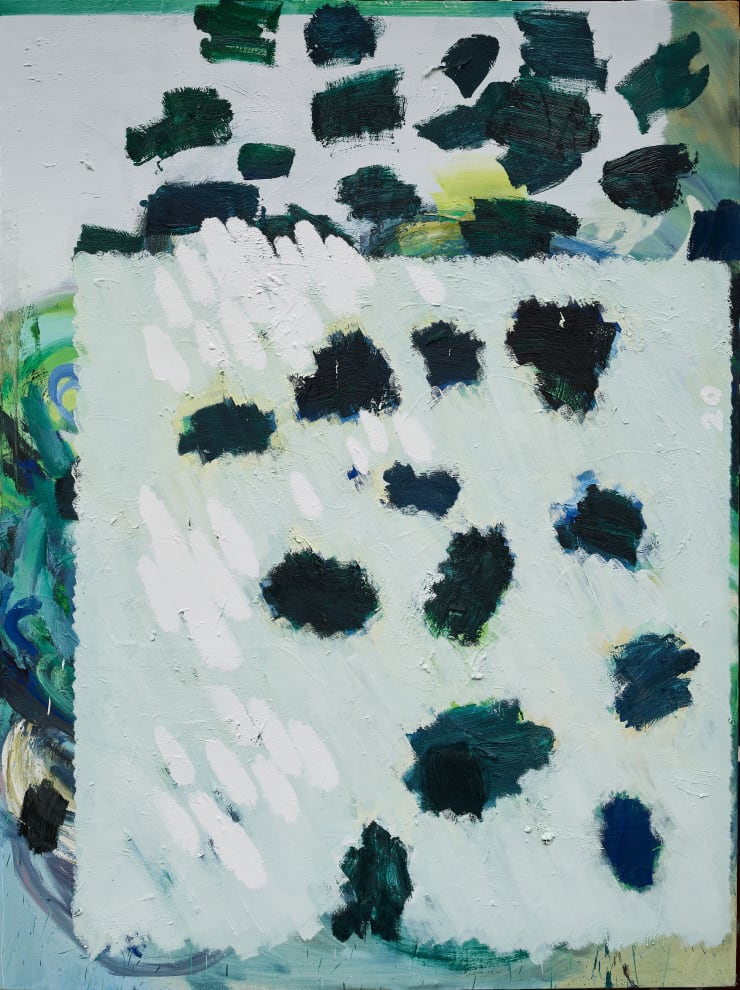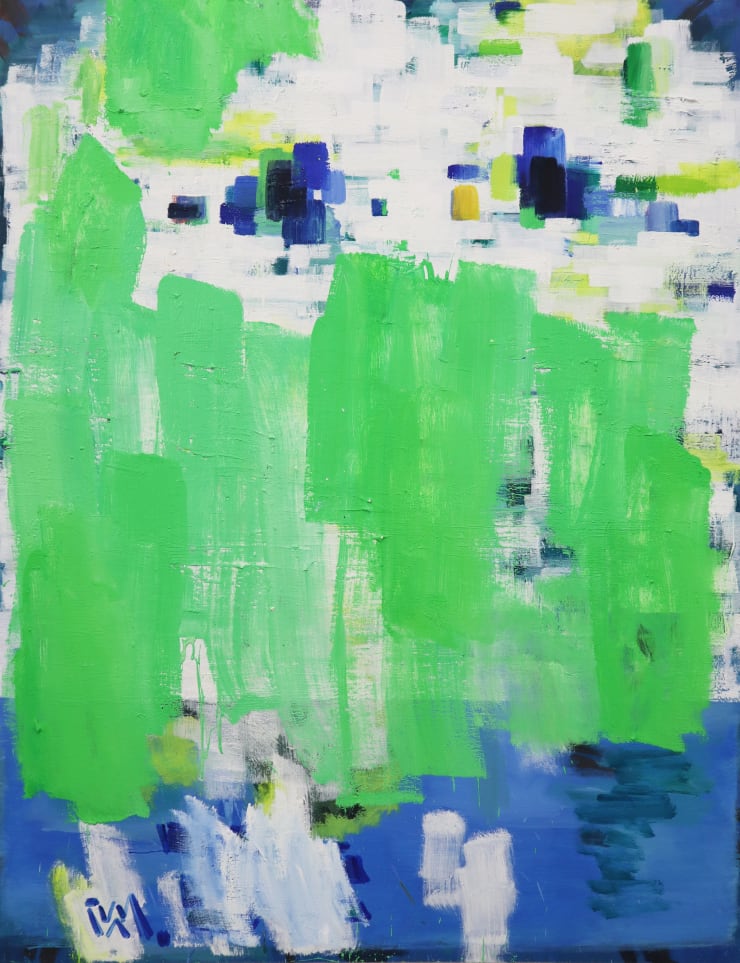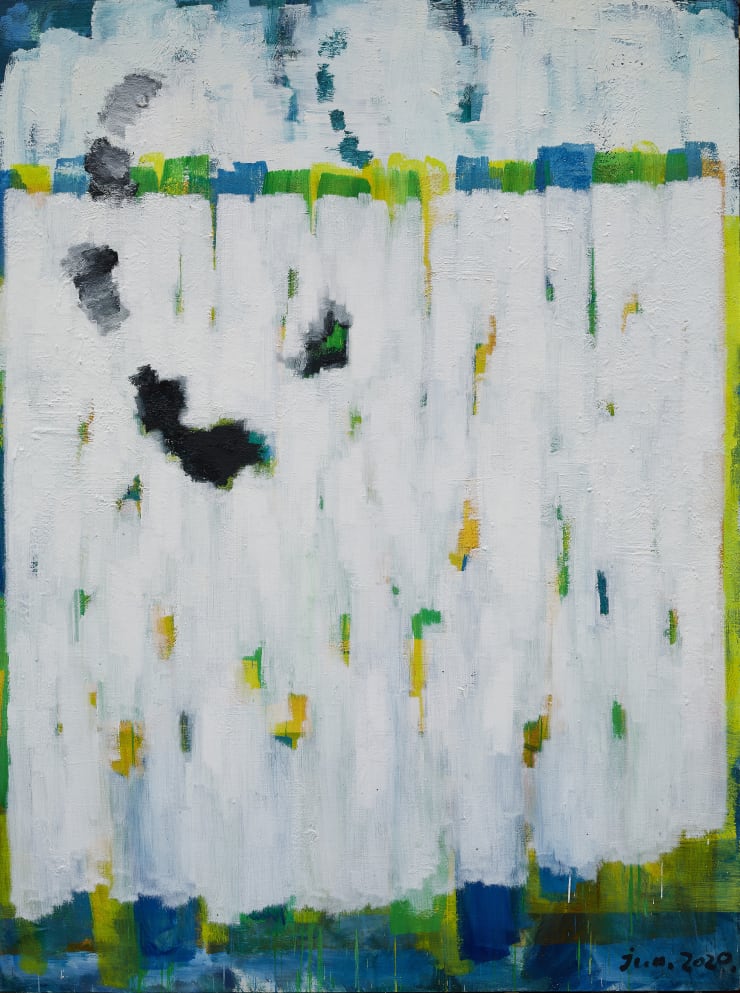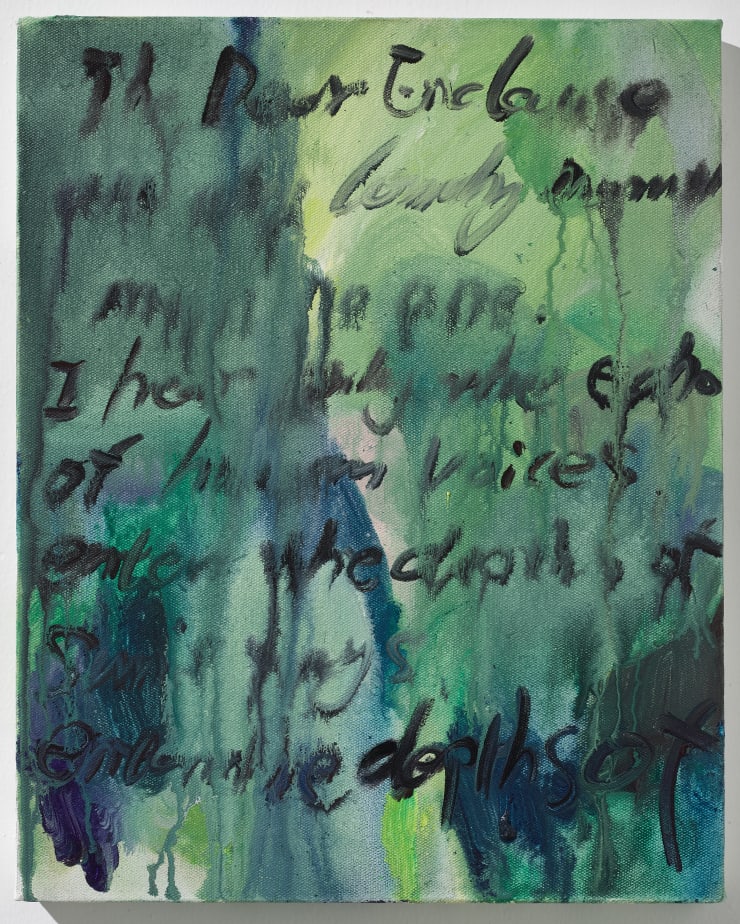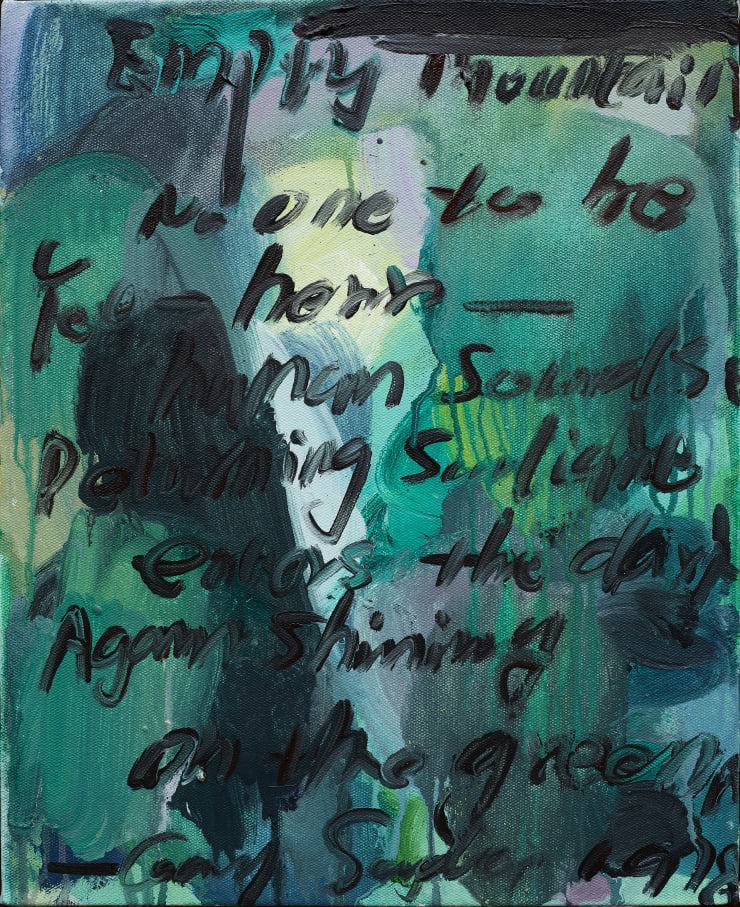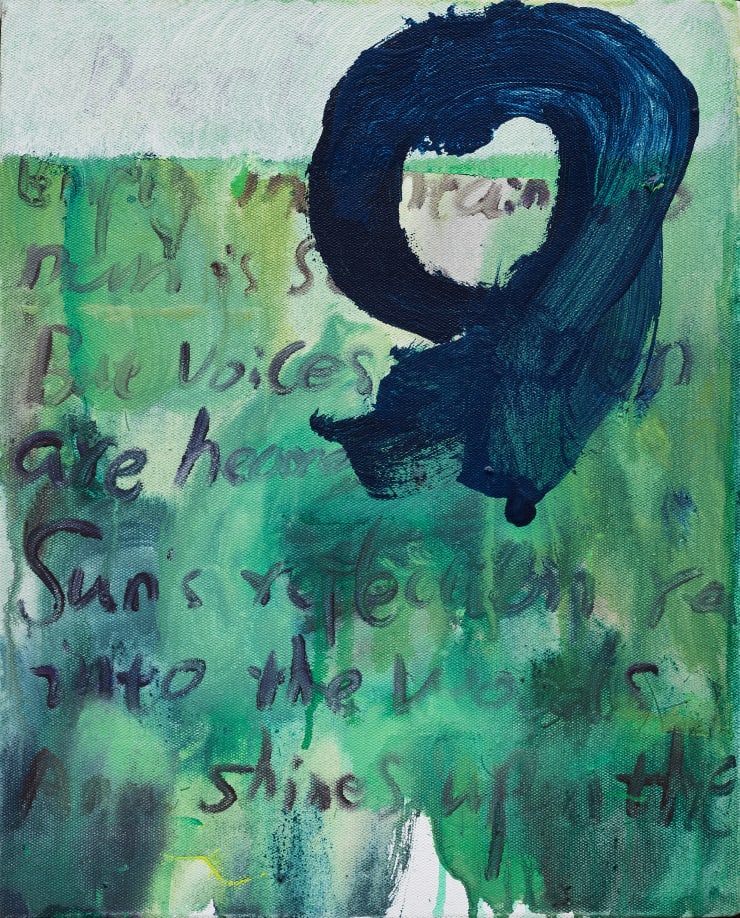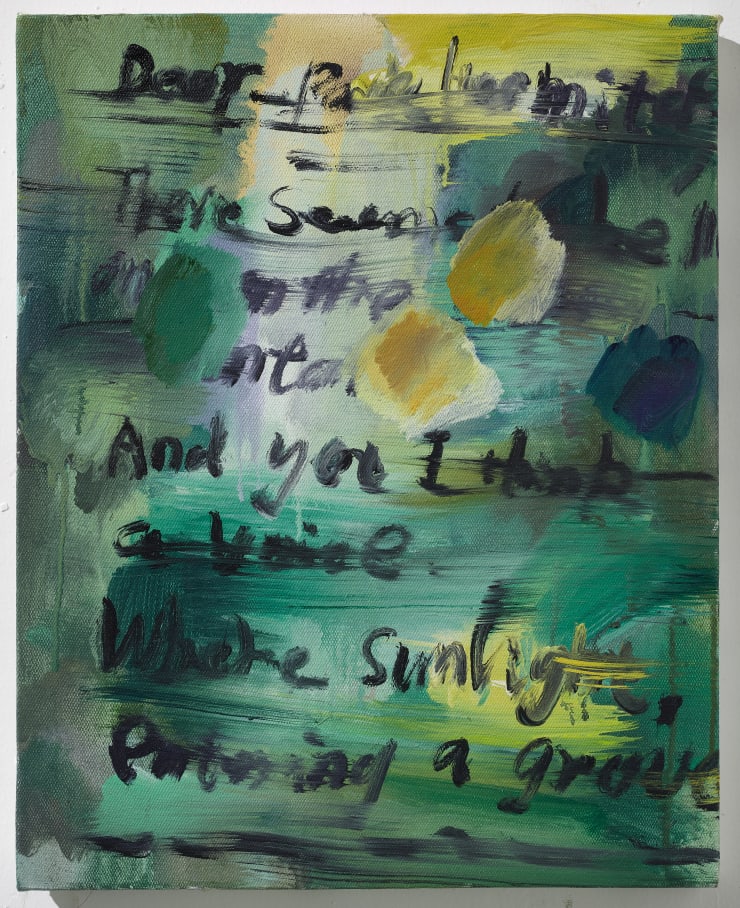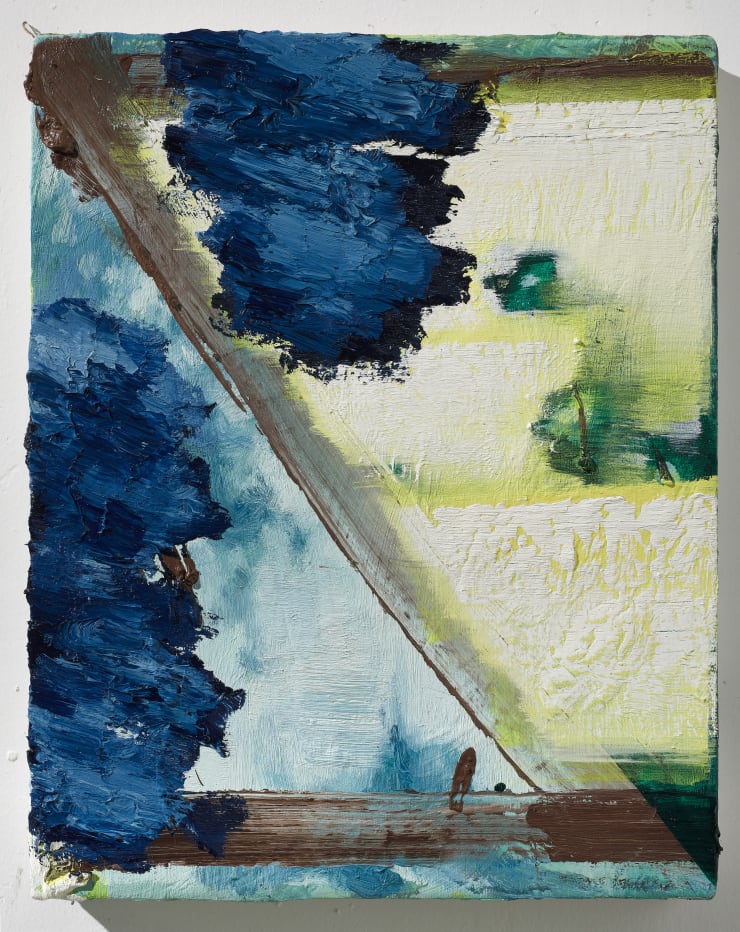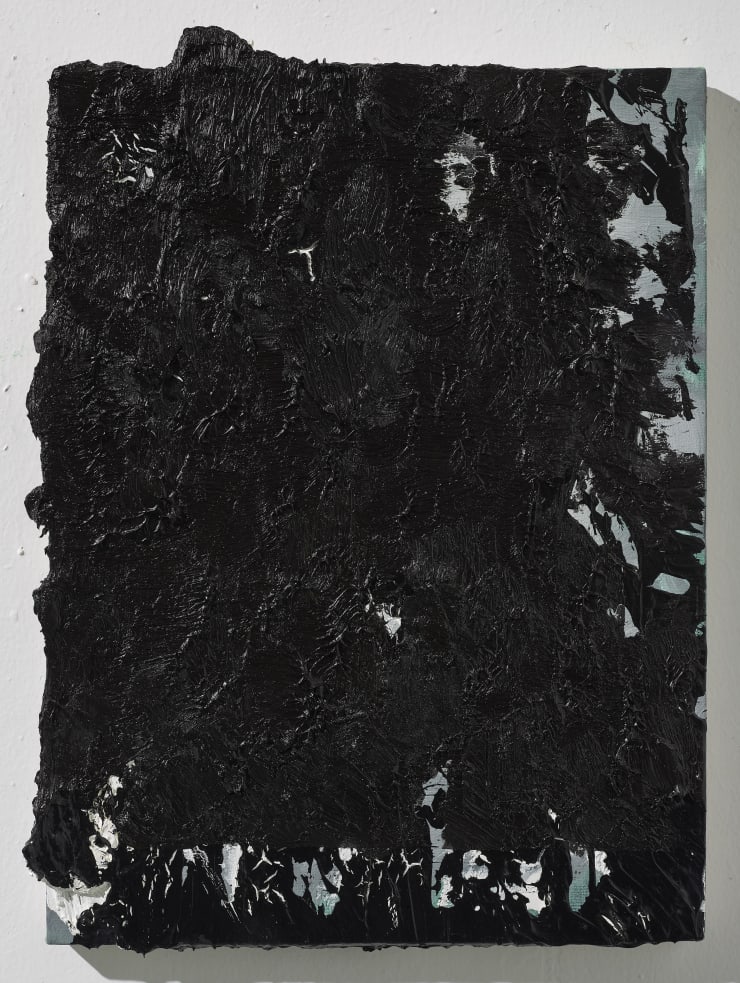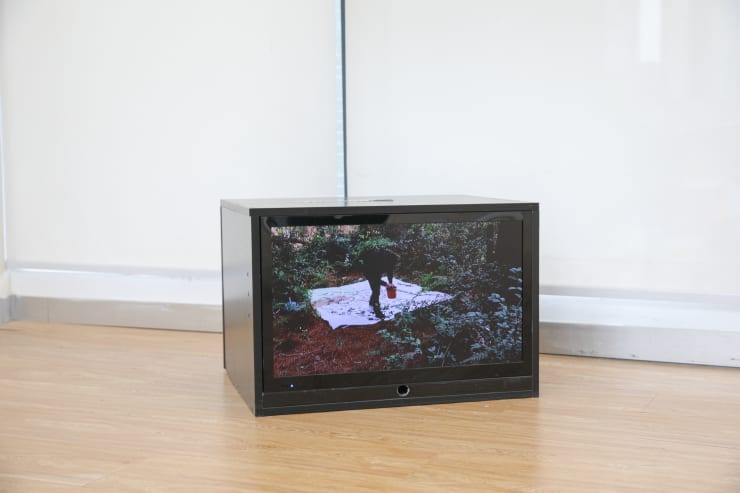The Motion of Light: Wang Jun
The light
slid in through the crevice
greeted
the damp grass
Bright
White
It is painting
— Wang Jun 2021.02.20
A Thousand Plateaus Art Space is pleased to present Wang Jun's solo exhibition The Motion of Light from March 13 to April 20, 2021, featuring the artist's new and recent works.
For many years, Wang Jun has been entangled in different aspects involved in the term "painting". After the discussion about painting methods and the mapping of his own painting clues in two previous solo exhibitions at A Thousand Plateaus ("Flashback", 2016; "Sphere", 2018), The Motion of Light returns to a clear theme: Landscape, more specifically, an unnamed forest. The work starts from a basic sketching of sceneries and path-breakingly “re-photographes (fu zhao)” that ordinary and eternal theme.
Re-photographing (fu zhao) comes from the famous Chinese poem The Deer Enclosure (Lu Zhai) by Wang Wei. It refers to the process of continuous movement of light, and by extension, an awakening, reflecting actions that are accidental, frustrated, deliberate, and out of control. The light here, except the natural light, also means various painting experiences and cognitions. The studio is a dense forest, so is the exhibition space. The work, roughly resembling the "humble" "lichen", flickers and disappears in the exhibition hall, waiting for the "light of viewing". They together bring a special perception similar to Wang Wei’s verse: “Where sunlight, entering a grove, Shines back to me from the green moss.”-- In the forest, the encounter of light and grass is a moment of shining; it is the action of coming, wiping, or it may be throwing or stimulating.
Wang Jun prefers to work in a continuous self-doubt and wandering way. He rejects to translate the image directly and simply. Instead, he tries to get closer to a perceptual reality through constant denial, coverage, and reconstruction, making the "method" of creation become the "content" , or the “landscape”in this case.
Landscape mirrors the mind. Some of the new works respond to the portrait painting (self-portrait). Returning from the forest to the studio, surprised or curious eye-like circles grow on canvas, whether the images are metamorphic representations of trees, or remaining traces after painting layer by layer. They will greet the audience while staring at other “eyes” in the gallery room, which are a batch of materialized "landscapes" woven into the net of "compound-eye" viewing.
A Thousand Plateaus Art Space is pleased to present Wang Jun's solo exhibition The Motion of Light from March 13 to April 20, 2021, featuring the artist's new and recent works.
-
 王俊 Wang Jun, 无题(雨)| Untitled (Rain), 2020
王俊 Wang Jun, 无题(雨)| Untitled (Rain), 2020 -
 王俊 Wang Jun, 无题(光)| Untitled (Light), 2020
王俊 Wang Jun, 无题(光)| Untitled (Light), 2020 -
 王俊 Wang Jun, 无题(灰)| Untitled (Grey), 2020
王俊 Wang Jun, 无题(灰)| Untitled (Grey), 2020 -
 王俊 Wang Jun, 无题(瀑布)No.1 | Untitled (Waterfall) No.1, 2020
王俊 Wang Jun, 无题(瀑布)No.1 | Untitled (Waterfall) No.1, 2020 -
 王俊 Wang Jun, 2018
王俊 Wang Jun, 2018 -
 王俊 Wang Jun, 无题(瀑布)No.2 | Untitled (Waterfall) No.2 , 2020
王俊 Wang Jun, 无题(瀑布)No.2 | Untitled (Waterfall) No.2 , 2020 -
 王俊 Wang Jun, 无题(树)No.1 | Untitled (Tree) No.1, 2020
王俊 Wang Jun, 无题(树)No.1 | Untitled (Tree) No.1, 2020 -
 王俊 Wang Jun, 无题(树)No.2 | Untitled (Tree) No.2, 2020
王俊 Wang Jun, 无题(树)No.2 | Untitled (Tree) No.2, 2020 -
 王俊 Wang Jun, 无题(树)No.3 | Untitled (Tree) No.3, 2020
王俊 Wang Jun, 无题(树)No.3 | Untitled (Tree) No.3, 2020 -
 王俊 Wang Jun, 无题(树)No.4 | Untitled (Tree) No.4, 2020
王俊 Wang Jun, 无题(树)No.4 | Untitled (Tree) No.4, 2020 -
 王俊 Wang Jun, 无题(树)No.5 | Untitled (Tree) No.5, 2020
王俊 Wang Jun, 无题(树)No.5 | Untitled (Tree) No.5, 2020 -
 王俊 Wang Jun, 无题(影)| Untitled (Shadow), 2020
王俊 Wang Jun, 无题(影)| Untitled (Shadow), 2020 -
 王俊 Wang Jun, 无题(客人)| Untitled (Guest), 2020
王俊 Wang Jun, 无题(客人)| Untitled (Guest), 2020 -
 王俊 Wang Jun, 无题(绿)| Untitled (Green), 2020
王俊 Wang Jun, 无题(绿)| Untitled (Green), 2020 -
 王俊 Wang Jun, 无题(致王维)No.1 | Untitled (To Wang Wei) No.1, 2020
王俊 Wang Jun, 无题(致王维)No.1 | Untitled (To Wang Wei) No.1, 2020 -
 王俊 Wang Jun, 无题(致王维)No.2 | Untitled (To Wang Wei) No.2, 2020
王俊 Wang Jun, 无题(致王维)No.2 | Untitled (To Wang Wei) No.2, 2020 -
 王俊 Wang Jun, 2020
王俊 Wang Jun, 2020 -
 王俊 Wang Jun, 无题(致王维)No.4 | Untitled (To Wang Wei) No.4, 2020
王俊 Wang Jun, 无题(致王维)No.4 | Untitled (To Wang Wei) No.4, 2020 -
 王俊 Wang Jun, 无题(致王维)No.5 | Untitled (To Wang Wei) No.5, 2020
王俊 Wang Jun, 无题(致王维)No.5 | Untitled (To Wang Wei) No.5, 2020 -
 王俊 Wang Jun, 无题(致王维)No.6 | Untitled (To Wang Wei) No.6, 2020
王俊 Wang Jun, 无题(致王维)No.6 | Untitled (To Wang Wei) No.6, 2020 -
 王俊 Wang Jun, 无题(致王维)No.7 | Untitled (To Wang Wei) No.7, 2020
王俊 Wang Jun, 无题(致王维)No.7 | Untitled (To Wang Wei) No.7, 2020 -
 王俊 Wang Jun, 无题(致王维)No.8 | Untitled (To Wang Wei) No.8, 2020
王俊 Wang Jun, 无题(致王维)No.8 | Untitled (To Wang Wei) No.8, 2020 -
 王俊 Wang Jun, 无题(蓝)| Untitled (Blue), 2020
王俊 Wang Jun, 无题(蓝)| Untitled (Blue), 2020 -
 王俊 Wang Jun, 无题(观)No.1 | Untitled (Watch) No.1, 2020
王俊 Wang Jun, 无题(观)No.1 | Untitled (Watch) No.1, 2020 -
 王俊 Wang Jun, 无题(观)No.2 | Untitled (Watch) No.2, 2020
王俊 Wang Jun, 无题(观)No.2 | Untitled (Watch) No.2, 2020 -
 王俊 Wang Jun, 无题(泪)| Untitled (Tear), 2020
王俊 Wang Jun, 无题(泪)| Untitled (Tear), 2020 -
 王俊 Wang Jun, 光 | Light, 2020
王俊 Wang Jun, 光 | Light, 2020 -
 王俊 Wang Jun, 写生练习(No.5)| Sketching Exercise (No.5), 2020
王俊 Wang Jun, 写生练习(No.5)| Sketching Exercise (No.5), 2020 -
 王俊 Wang Jun, 写生练习(No.1)| Sketching Exercise (No.1), 2020
王俊 Wang Jun, 写生练习(No.1)| Sketching Exercise (No.1), 2020 -
 王俊 Wang Jun, 写生练习(No.2)| Sketching Exercise (No.2), 2020
王俊 Wang Jun, 写生练习(No.2)| Sketching Exercise (No.2), 2020 -
 王俊 Wang Jun, 写生练习(No.3)| Sketching Exercise (No.3), 2020
王俊 Wang Jun, 写生练习(No.3)| Sketching Exercise (No.3), 2020 -
 王俊 Wang Jun, 写生练习(No.4)| Sketching Exercise (No.4), 2020
王俊 Wang Jun, 写生练习(No.4)| Sketching Exercise (No.4), 2020 -
 王俊 Wang Jun, 写生练习(盲)| Sketching Exercise (Blind), 2020
王俊 Wang Jun, 写生练习(盲)| Sketching Exercise (Blind), 2020 -
 王俊 Wang Jun, 无题2020 | Untitled 2020, 2020
王俊 Wang Jun, 无题2020 | Untitled 2020, 2020 -
 王俊 Wang Jun, 林中写生系列 No.10 | Watercolor Sketching in the Forest No.10, 2019.06.13
王俊 Wang Jun, 林中写生系列 No.10 | Watercolor Sketching in the Forest No.10, 2019.06.13 -
 王俊 Wang Jun, 林中写生系列 No.7 | Watercolor Sketching in the Forest No.7, 2019.05.17
王俊 Wang Jun, 林中写生系列 No.7 | Watercolor Sketching in the Forest No.7, 2019.05.17 -
 王俊 Wang Jun, 林中写生系列 No.7 | Watercolor Sketching in the Forest No.7, 2019.05.17
王俊 Wang Jun, 林中写生系列 No.7 | Watercolor Sketching in the Forest No.7, 2019.05.17 -
 王俊 Wang Jun, 林中写生系列 No.7 | Watercolor Sketching in the Forest No.7, 2019.05.17
王俊 Wang Jun, 林中写生系列 No.7 | Watercolor Sketching in the Forest No.7, 2019.05.17 -
 王俊 Wang Jun, 林中写生系列 No.9 | Watercolor Sketching in the Forest No.9, 2019.06.13
王俊 Wang Jun, 林中写生系列 No.9 | Watercolor Sketching in the Forest No.9, 2019.06.13 -
 王俊 Wang Jun, 林中写生系列 No.9 | Watercolor Sketching in the Forest No.9, 2019.06.13
王俊 Wang Jun, 林中写生系列 No.9 | Watercolor Sketching in the Forest No.9, 2019.06.13 -
 王俊 Wang Jun, 林中写生系列 No.9 | Watercolor Sketching in the Forest No.9, 2019.06.13
王俊 Wang Jun, 林中写生系列 No.9 | Watercolor Sketching in the Forest No.9, 2019.06.13 -
 王俊 Wang Jun, 林中写生系列No.1 | Watercolor Sketching in the Forest No.1, 2018.11.25
王俊 Wang Jun, 林中写生系列No.1 | Watercolor Sketching in the Forest No.1, 2018.11.25 -
 王俊 Wang Jun, 林中写生系列No.2 | Watercolor Sketching in the Forest No.2, 2018.11.28
王俊 Wang Jun, 林中写生系列No.2 | Watercolor Sketching in the Forest No.2, 2018.11.28 -
 王俊 Wang Jun, 林中写生系列No.3 | Watercolor Sketching in the Forest No.3, 2019.03.26
王俊 Wang Jun, 林中写生系列No.3 | Watercolor Sketching in the Forest No.3, 2019.03.26 -
 王俊 Wang Jun, 林中写生系列No.4 | Watercolor Sketching in the Forest No.4, 2019.04.06
王俊 Wang Jun, 林中写生系列No.4 | Watercolor Sketching in the Forest No.4, 2019.04.06 -
 王俊 Wang Jun, 林中写生系列No.5 | Sketching in the Forest No.5, 2019.04.11
王俊 Wang Jun, 林中写生系列No.5 | Sketching in the Forest No.5, 2019.04.11 -
 王俊 Wang Jun, 林中写生系列No.8 | Watercolor Sketching in the Forest No.8, 2019.06.03
王俊 Wang Jun, 林中写生系列No.8 | Watercolor Sketching in the Forest No.8, 2019.06.03

